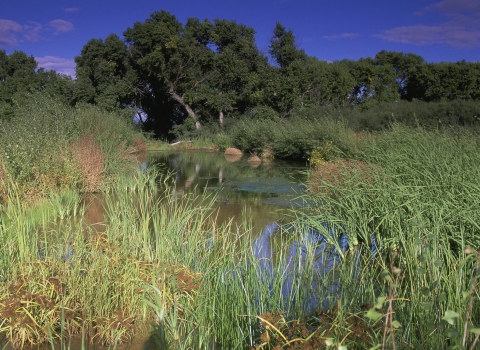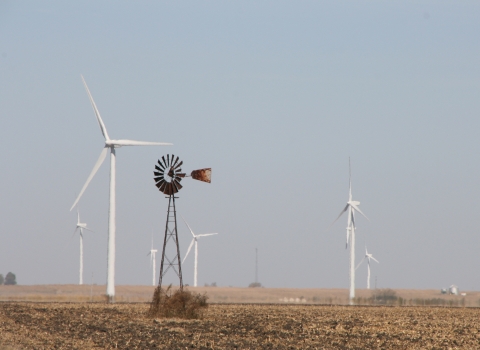During the later half of this century, the lower Mississippi River valley has experienced a loss of over 85 percent of the historically occurring bottomland hardwood forests.
These once lush green expanses of forested wetlands are now, as we enter the new millennium, undergoing a revitalization. Up and down the lower Mississippi River the U.S. Fish and Wildlife Service is spearheading the effort on public and private lands alike to grow a new forest.
One such place this is happening is on and around Yazoo National Wildlife Refuge. Since 1989, 14,000 acres have been planted with a combination of seeds and seedlings on and around the refuge. Beginning January 21 through April 22, 1999, an extraordinary effort to reforest these bottomlands occurred when almost 5300 acres - one third of the total public and private lands to date - were planted with bottomland hardwood seedlings. This cooperative effort involved not only the U. S. Fish and Wildlife Service (which manages Yazoo National Wildlife Refuge) but also Mississippi Department of Transportation and some private landowners. Refuge staff members, Boy Scouts, Girl Scouts, volunteers and contractors planted close to 1.5 million seedlings in this three-month period.
A variety of native bottomland hardwood species are being planted in these cleared fields. These include a variety of oaks such as Nuttall, willow, water and cherry bark. Other trees being planted are ash, cottonwood, sycamore, persimmon, sweet pecan and sugar berry. These forested wetlands play a vital role in providing habitat for a wide range of wildlife - from black bears, white- tailed deer, a variety of waterfowl such as wood ducks and mallards to shorebirds and migrating songbirds.
With the delta's heavy clay soils, the best planting will often involve wet muddy conditions. Because many of the sites have been fallow, some site preparation may be necessary before planting. Hardwood seedlings are ordered from nurseries to ensure adequate size and good health. Seedlings are picked up or shipped from the nurseries during the winter and then stored at the refuge in refrigerated coolers (so they remain dormant) until it is time to plant.
When asked why he decided to participate in this habitat restoration program, David Coon of the Wetland Hunting Club replied, " The biggest incentive is the Wetlands Reserve Program and its funding. This land, like a lot of the soybean land, should never have been cleared. Three out of five years it's wet, and we have a vested interest to control and manage for duck hunting. The next natural step was to restore the high ground to trees. We are looking forward to having deer hunting there," said Coon.
Private landowners participate in these reforestation and restoration efforts through a variety of support programs such as the Fish and Wildlife Service's Partners for Fish and Wildlife program and the Wetlands Reserve Program managed by the Department of Agriculture's National Resource Conservation Service. Both of these programs do provide some form of payment to the landowners for restoring previously cleared land back to bottomland hardwood forests. Of the lands planted during the first part of 1999, almost 900 acres were in private ownership.
Although the lower Mississippi River valley may never have the once massive stretches of bottomland hardwood forests that existed even at the turn of the century, efforts such as the one happening in and around Yazoo National Wildlife Refuge will go a long way in restoring not only much needed habitat for wildlife, but also a place for people to enjoy for generations to come.

